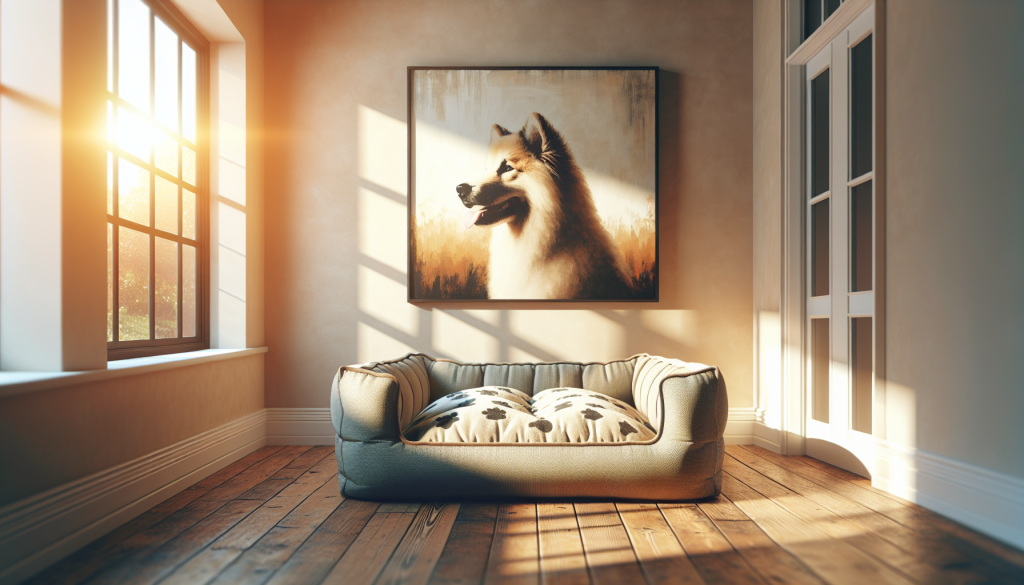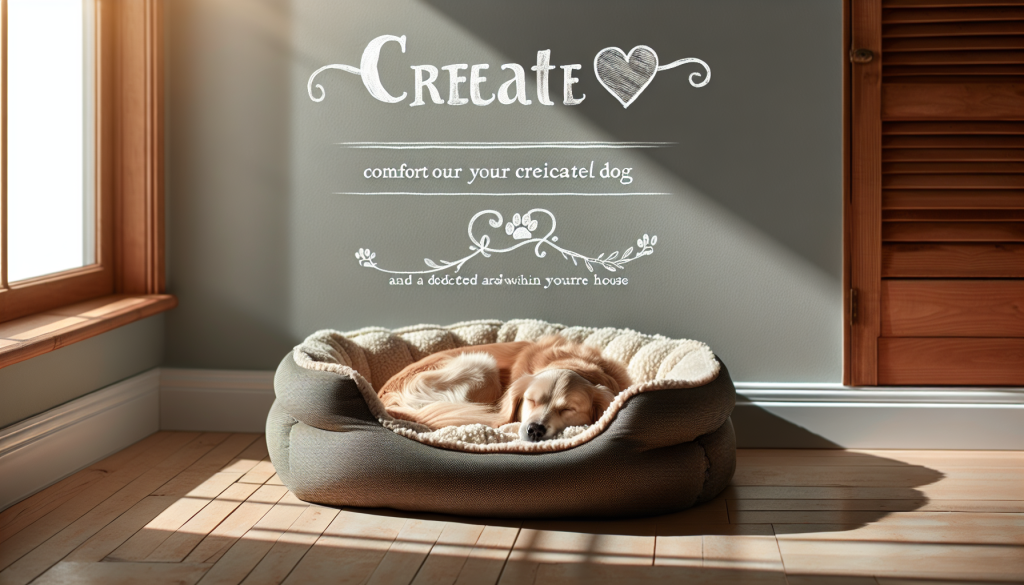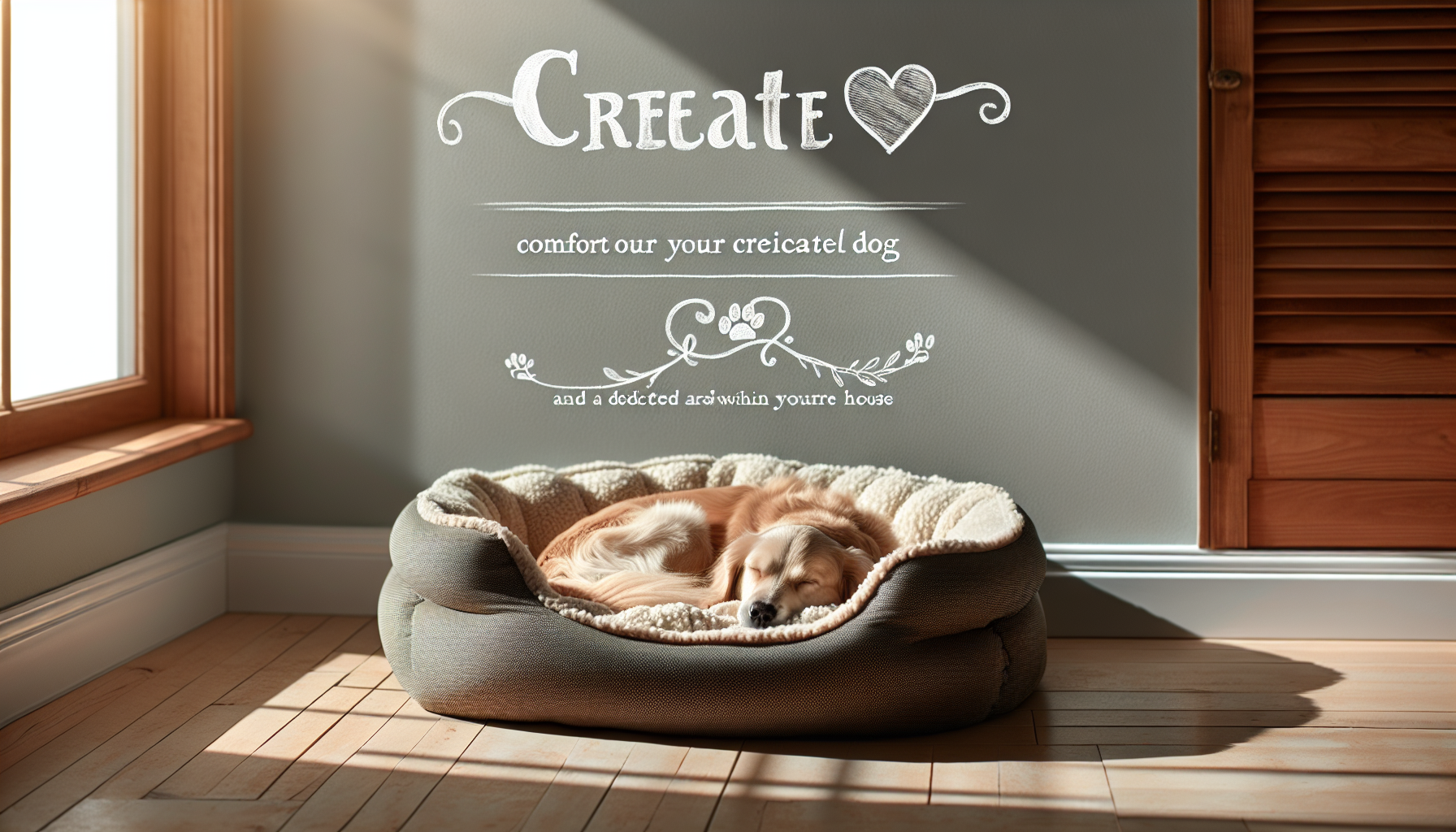If you’re a proud dog owner, you know that your furry friend’s sleep is just as important as your own. But with so many cozy spots in your house, it can be a puzzling choice to decide where your dog should sleep. From cuddling on the couch to snuggling in your bed, each option has its own benefits. In this article, we’ll explore the various sleeping arrangements you can offer your canine companion and help you find the perfect spot for them to get their beauty rest.
Choosing the Right Sleeping Area
When it comes to deciding where your dog should sleep in the house, there are several factors to consider. By taking into account your dog’s size, age, sleeping habits, and any health issues, you can choose the most suitable sleeping area that ensures your furry friend gets a good night’s sleep.
Consider Your Dog’s Size
The size of your dog plays a significant role in determining the best sleeping area for them. Larger dogs may feel more comfortable in spacious areas such as the living room or an outdoor shelter, where they have plenty of room to stretch out. On the other hand, smaller dogs may prefer a cozier space, like a crate or a dog bed on the floor.
Take Your Dog’s Age into Account
Just like humans, dogs’ sleeping preferences may change as they age. Puppies, for example, often benefit from sleeping close to their owners in the bedroom due to their need for a sense of security. Older dogs, on the other hand, may appreciate a quieter sleeping area that is away from any potential disturbances.
Observe Your Dog’s Sleeping Habits
By paying attention to your dog’s sleeping habits, you can better understand their preferences. Some dogs may enjoy curling up under a blanket, while others may prefer sleeping spread out on a cool surface. Understanding your dog’s preferred sleeping positions and surfaces can help guide your decision on the best sleeping area for them.
Consider Any Health Issues
If your dog has any specific health issues, it’s crucial to choose a sleeping area that accommodates their needs. For example, dogs with joint or mobility issues may benefit from a more supportive and cushioned sleeping surface, such as a orthopedic dog bed. It’s important to consult with your veterinarian to ensure you provide the best sleeping environment for your dog’s specific health concerns.
Bedroom
Benefits of Letting Your Dog Sleep in Your Bedroom
Allowing your dog to sleep in your bedroom can have numerous benefits. For starters, it promotes a stronger bond between you and your furry companion. Sleeping in close proximity to each other can increase feelings of comfort, security, and companionship. Additionally, having your dog in the bedroom can provide a sense of protection, both for you and your dog, as you are able to keep an eye on each other throughout the night.
Preventive Measures for Letting Your Dog Sleep in Your Bedroom
While letting your dog sleep in your bedroom can be a wonderful experience, it’s essential to establish boundaries and rules to maintain a peaceful sleeping environment. Setting up a designated sleeping area, such as a dog bed or crate, can help establish boundaries and prevent your dog from wandering onto your bed. Additionally, regular grooming and hygiene practices, such as brushing your dog’s fur and clipping their nails, can help ensure that your bedroom remains clean and free of excess dirt or hair.
Creating a Comfortable Sleeping Area in Your Bedroom
To create a comfortable sleeping area for your dog in your bedroom, consider their individual needs and preferences. Provide a soft and supportive dog bed or blanket in a location that is away from any drafts or direct heat sources. Placing some of your dog’s favorite toys or a familiar-scented item in their sleeping area can also help create a cozy and inviting atmosphere.

Living Room
Benefits of Letting Your Dog Sleep in the Living Room
Allowing your dog to sleep in the living room can provide them with a sense of independence and freedom. This can be particularly beneficial for dogs who enjoy having more space to roam and explore. Additionally, having your dog sleep in the living room can help protect your bedroom from excess shedding or potential damage caused by dog hair or scratching.
Preventive Measures for Letting Your Dog Sleep in the Living Room
To prevent any potential disruptions or damage in the living room, it’s important to establish clear boundaries and rules. Consider using pet gates or barriers to restrict access to certain areas within the living room, if necessary. Additionally, providing your dog with appropriate chew toys or puzzle toys can help redirect their energy and prevent them from chewing on furniture or other household items.
Creating a Comfortable Sleeping Area in the Living Room
Create a designated sleeping area for your dog in the living room that is comfortable and inviting. This can be achieved by providing a cozy dog bed, cushion, or blanket in a quiet corner of the room. Ensure the area is away from noise or foot traffic to prevent any interruptions and enable your dog to rest peacefully.
Kitchen or Utility Room
Benefits of Letting Your Dog Sleep in the Kitchen or Utility Room
Allowing your dog to sleep in the kitchen or utility room can be a convenient option, especially if these areas provide easy access to their food and water bowls. Additionally, these areas are often easy to clean, making it simpler to maintain hygiene and cleanliness.
Preventive Measures for Letting Your Dog Sleep in the Kitchen or Utility Room
While the kitchen or utility room can be a suitable sleeping area for your dog, it’s important to ensure their safety and prevent any accidents. Keep hazardous items and chemicals securely stored out of your dog’s reach, and avoid leaving any potentially dangerous objects or foods on countertops or open shelves. Additionally, consider providing a gate or barrier to prevent your dog from wandering into other areas of the house during the night.
Creating a Comfortable Sleeping Area in the Kitchen or Utility Room
To create a comfortable sleeping area for your dog in the kitchen or utility room, provide a soft and washable bed or blanket. Ensure the area is free from any sharp objects or potential hazards. Placing the sleeping area away from appliances or any areas with excessive noise can help create a calm and restful environment for your dog.

Outdoor Shelter or Kennel
Benefits of Letting Your Dog Sleep in an Outdoor Shelter or Kennel
If you have a spacious backyard or access to an outdoor area, letting your dog sleep in an outdoor shelter or kennel can offer them a unique sleeping experience. Dogs who enjoy spending time outdoors may find great comfort in having a dedicated space outside where they can sleep and relax. Additionally, sleeping in an outdoor shelter can expose your dog to natural sounds and scents, which can contribute to their overall well-being.
Preventive Measures for Letting Your Dog Sleep in an Outdoor Shelter or Kennel
When providing an outdoor sleeping area for your dog, it’s crucial to ensure their safety and protection from the elements. Choose a shelter or kennel that is appropriate for your dog’s size and breed, and make sure it is sturdy and secure. It’s also important to provide adequate bedding and insulation to keep your dog warm during colder nights. Regularly check the area for any potential hazards or damage, such as sharp objects or loose wires.
Creating a Comfortable Sleeping Area in an Outdoor Shelter or Kennel
To make your dog’s outdoor sleeping area more comfortable, provide a well-insulated and weatherproof dog bed or blanket. Consider adding extra padding or a thermal blanket during colder months to keep your dog cozy. It’s also essential to provide access to fresh water and ensure the area is well-ventilated to prevent overheating during warmer weather.
Crate or Dog Cage
Benefits of Letting Your Dog Sleep in a Crate or Dog Cage
A crate or dog cage can be a suitable sleeping area for dogs, especially those who benefit from having their own den-like space. Crates can offer a sense of security and can be useful for house training or managing separation anxiety. They can also provide a safe and controlled environment for times when you need to confine your dog, such as during travel.
Preventive Measures for Letting Your Dog Sleep in a Crate or Dog Cage
Using a crate or dog cage as a sleeping area requires careful management and consideration of your dog’s needs. It’s important to choose an appropriately sized crate that allows your dog to comfortably stand up, turn around, and lie down. Avoid using the crate as a means of punishment and ensure that your dog has access to food, water, and regular exercise outside of the crate. Gradually introduce your dog to the crate using positive reinforcement and never force them to enter or stay in it.
Creating a Comfortable Sleeping Area in a Crate or Dog Cage
To make the crate or dog cage a comfortable and inviting sleeping area, provide a soft bed or blanket that your dog can rest on. Make sure the crate is clean, well-ventilated, and placed in a quiet area of your home to promote relaxation and minimize distractions. It’s crucial to regularly clean the crate and wash the bedding to maintain hygiene and keep your dog’s sleeping area fresh.
Dog Bed or Blanket on the Floor
Benefits of Letting Your Dog Sleep on a Dog Bed or Blanket on the Floor
Allowing your dog to sleep on a dog bed or blanket on the floor offers a simple and versatile sleeping option. This can be particularly beneficial for dogs who prefer more open spaces and don’t require the constraints of a crate or designated sleeping area. It also allows for easy cleaning and maintenance, as you can easily wash the bed or blanket as needed.
Preventive Measures for Letting Your Dog Sleep on a Dog Bed or Blanket on the Floor
When opting for a dog bed or blanket on the floor as a sleeping area, it’s important to establish clear boundaries to avoid any potential issues or disruptions. Teach your dog to associate the bed or blanket with sleep time and discourage them from using it as a play or chew area. Additionally, regularly clean and replace the bedding to maintain hygiene and prevent odors.
Creating a Comfortable Sleeping Area on the Floor
To create a comfortable sleeping area on the floor for your dog, choose a bed or blanket that provides adequate support and cushioning. Consider the material and thickness of the bedding to ensure it meets your dog’s comfort needs. Place the bed or blanket in a quiet and draft-free area, away from any high-traffic areas or potential hazards.
Factors to Consider Regardless of Location
Temperature and Environmental Factors
Regardless of the sleeping area you choose for your dog, it’s crucial to consider temperature and environmental factors. Ensure that the sleeping area is not exposed to extreme temperatures, drafts, or direct sunlight. Provide appropriate ventilation and insulation to keep your dog comfortable in different weather conditions.
Safety and Security
The safety and security of your dog should be a top priority when selecting a sleeping area. Assess the chosen location for potential hazards or dangers, such as sharp objects, toxic plants, or wires. Ensure that the sleeping area is secure and free from any potential escape routes to prevent your dog from wandering off or getting into unsafe situations.
Proximity to Family Members
Consider the proximity of your chosen sleeping area to family members, as dogs are social animals who thrive on companionship. If your dog enjoys being close to you or other family members, choosing a sleeping area that allows them to be in close proximity can help fulfill their social needs and provide a sense of comfort.
Availability of Access to Toilet Area
It’s important to ensure that your dog has easy access to a designated toilet area from their sleeping location, especially during the night. This can help prevent accidents and promote good bathroom habits. If your dog sleeps in an area that is far from the main living space, consider providing a convenient indoor or outdoor restroom option, such as a puppy pad or a well-maintained grassy area.
Training Your Dog to Sleep in a Specific Area
Establishing a Routine
To train your dog to sleep in a specific area, consistency is key. Establish a consistent bedtime routine that includes taking your dog to their designated sleeping area and providing them with a comfortable space. Consistency helps your dog understand where they should sleep and what behavior is expected of them.
Positive Reinforcement
Using positive reinforcement techniques can greatly aid in training your dog to sleep in a specific area. Reward your dog with treats, praise, or affection when they voluntarily go to their designated sleeping area and settle down. This positive association will encourage them to repeat the behavior in the future.
Encouraging and Rewarding Good Behavior
Whenever your dog chooses to sleep in the designated area or exhibits good sleep-related behavior, such as staying calm and quiet during the night, make sure to reward and praise them. This positive reinforcement reinforces the desired behavior and helps them understand that sleeping in the designated area is a positive experience.
Discouraging Unwanted Behavior
If your dog exhibits unwanted behavior, such as trying to jump onto your bed or whining excessively during the night, it’s important to discourage these behaviors. Use gentle redirection, such as calmly guiding them back to their designated sleeping area, and avoid giving in to their demands. Consistency and patience are key in helping your dog understand the boundaries and develop good sleep habits.
Conclusion
Choosing the right sleeping area for your dog is a decision that should take into account their size, age, sleeping habits, and health issues. Whether you choose to let your dog sleep in your bedroom, living room, kitchen or utility room, outdoor shelter or kennel, crate, or a dog bed on the floor, it’s important to consider their comfort, safety, and overall well-being. By creating a comfortable sleeping area and establishing clear boundaries, you can ensure that your furry friend gets a good night’s sleep and wakes up happy and refreshed every day. Remember to train your dog using positive reinforcement and provide them with a consistent routine to help them adjust to their designated sleeping area. With the right approach and care, you can create a sleeping environment that promotes relaxation, security, and happiness for both you and your beloved dog.
